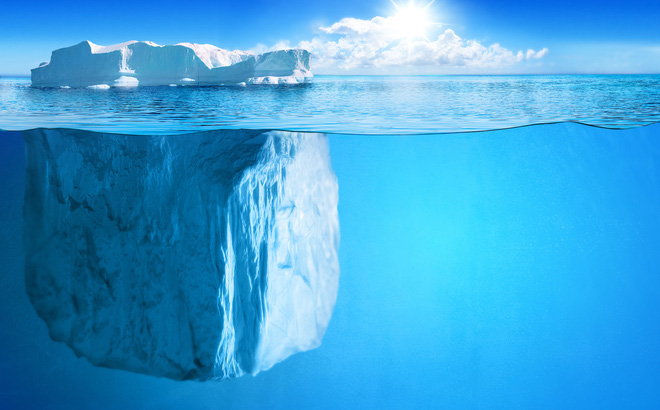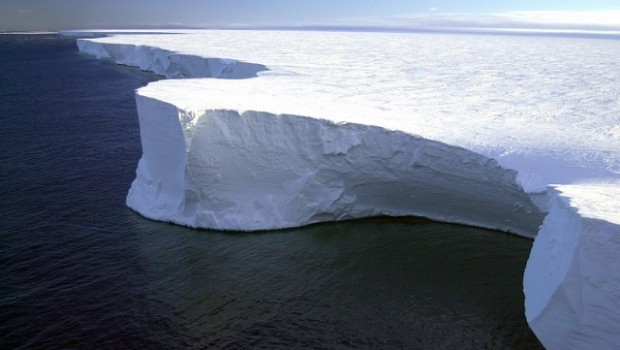4 scenario is happening when the largest iceberg in history has just broken in Antarctica
Weighing more than 1,000 billion tons, four times the size of London, the ice sheet has just separated from the Larsen C ice shelf on July 12 to become the largest iceberg in history.

Illustration.
And here's what happens next:
The iceberg slowly drifted away
This giant piece of ice, which is floating in the sea, will become one of the largest icebergs ever recorded in history. After breaking off the ice shelf, it will not drift quickly. But thanks to the ocean currents, it is likely that the iceberg will follow the coast and go to the Atlantic Ocean.
The ice will make noise
When ice shelves 'give birth' to icebergs, the ocean will be disturbed. After B-15 - the largest iceberg ever observed - separated from the Ross ice shelf in 2000, scientists using hydrophones to monitor underwater sounds have received strange signals from thousands of ways. kilometer.
This signal then led them to the rest of the giant B-15 ice sheet - continuing to disintegrate, causing the water to fill the slots, cracks and create a loud noise.

Fragments of broken ice can float for years
Depending on how fast they reach the warmer waters, the iceberg and its fragments can 'wander' in the ocean for many years.
According to NASA, 15 years after the B-15 separated from the Ross ice shelf, there are still 8 fragments of the original ice giant, the largest being the B-15T.

Larsen C ice shelves may continue to break
Scientists studying the event break the ice sheet without seeing a link to climate change, but it is still bad news in the long run for the ice shelf. Losing huge ice sheets made Larsen C less stable.
And the MIDAS Project team found that, like the case of Larsen B ice shelf, which lost a large part in 2002, Larsen C could continue to split after the ice floated away.
- The world's largest iceberg is broken by a storm
- The world's largest iceberg is at risk of breaking away from Antarctica
- The one trillion tons of ice has separated from Antarctica
- The iceberg is about the size of Singapore
- Video: Consequences of 1,000 billion tons of icebergs separated from Antarctica
- The ice is as big as London in 'wobbly teeth' apart from Antarctica
- What will happen to NASA's ever-hot rectangular iceberg?
- Add a giant iceberg from Antarctica
- The coffin-shaped iceberg is about to disappear after 18 years
- The strange ice sheets in Antarctica
- Discover the giant 'iceberg city' in Antarctica
- A giant iceberg broke
 Is the magnetic North Pole shift dangerous to humanity?
Is the magnetic North Pole shift dangerous to humanity? Washington legalizes the recycling of human bodies into fertilizer
Washington legalizes the recycling of human bodies into fertilizer Lightning stone - the mysterious guest
Lightning stone - the mysterious guest Stunned by the mysterious sunset, strange appearance
Stunned by the mysterious sunset, strange appearance Plan to build giant canopy over Antarctica has problems
Plan to build giant canopy over Antarctica has problems  Why does ice stick to your hands when you hold it?
Why does ice stick to your hands when you hold it?  NASA releases ice map on Mars
NASA releases ice map on Mars  After 389 days in the Arctic, costing more than $160 million, hundreds of scientists brought back bad news: What was it?
After 389 days in the Arctic, costing more than $160 million, hundreds of scientists brought back bad news: What was it?  650,000-year-old 'gateway to the underworld' discovered in Siberia
650,000-year-old 'gateway to the underworld' discovered in Siberia  How to explain the strange ice circle that rotates like a time-travel door?
How to explain the strange ice circle that rotates like a time-travel door? 